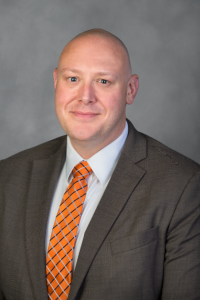By DAVID DUPONT
BG Independent News
This past semester, Bowling Green State University joined an effort to streamline how quickly research can flow from labs on campus into the economy.
BGSU signed onto a statewide initiative, the Ohio IP (Intellectual Property) Promise, which was spearheaded by Lt. Gov. John Husted.
The goal is to have a uniform, transparent, and streamlined system across the state’s higher education community to commercialize research.

Mark Fox, BGSU’s director for innovation and venture development, said in an interview after the announcement that business and industry had been frustrated that it took so long to work with higher education.
Now with template, “form-fill” agreements in place, and readily accessible on universities’ websites, “we can move at the speed of business.”
This benefits business, faculty and staff, and students.
“All our faculty are excited about their research and having an impact outside the classroom, outside the university,” Fox said. “Some of these things have commercial potential.”
This may involve licensing an invention, or starting a business to develop the creation.
For BGSU, this is another way to act on President Rodney Rogers’ mantra about being “a public university for the public good.”
Among the developments on campus that the Office of Technology Transfer and Services has assisted with are Alexis Ostrowski’s work in capturing the phosphorus from raw manure in beads. That keeps it from flowing into Lake Erie and puts it in a form that farmers then can use to fertilize crops.
Also, a major company has been working with the BGSU photo-chemical science program on campus to test products.
The range of private sector involvement with university is diverse, and the new protocol is designed to match that diversity.
It also is designed to help those creating as part of their university sponsored research to profit from it.
Technology developed through university funded research is owned by the state through the university.
The creator, though, gets 40 percent of the money earned by the patent, with another 10 percent assigned to a professional development fund. The university gets the rest. This arrangement continues even after faculty have left the university.
“All our faculty want their research to have an impact and getting their technologies out of the institution for the public good,” Fox said.
If those technologies are licensed to regional companies that creates jobs, jobs that BGSU graduates may fill.
Students benefit from working with faculty on these projects as well.
Those students developing ideas for The Hatch though still own the rights to their ideas.
Fox said his office does work closely with the Entrepreneurship Center, which can assist start-ups formed to commercialize university-spawned developments.
“That’s why the state is really interested because they understand that new technologies are going to be important for the state going forward, and where better to find those technologies than in research institutions,” Fox said. “We’re all working on cutting edge research.”
The Ohio IP Promise was developed by a task force that looked at the practices of the state universities that had been successful at technology transfer and had good commercialization rates. Many of its features, Fox said, were already in place at the University of Cincinnati and Ohio State.
“This puts all public institutions on the same page,” he said. In the past companies played universities against each other to get more favorable terms.
Now decisions will be made based on who can provide the best research and most pertinent technological assistance.
Fox, who has been at the university since January, 2018, said “the goal of this office is to be a resource. We’re service oriented. We want to make the process as easy as possible for faculty and external partners.”

